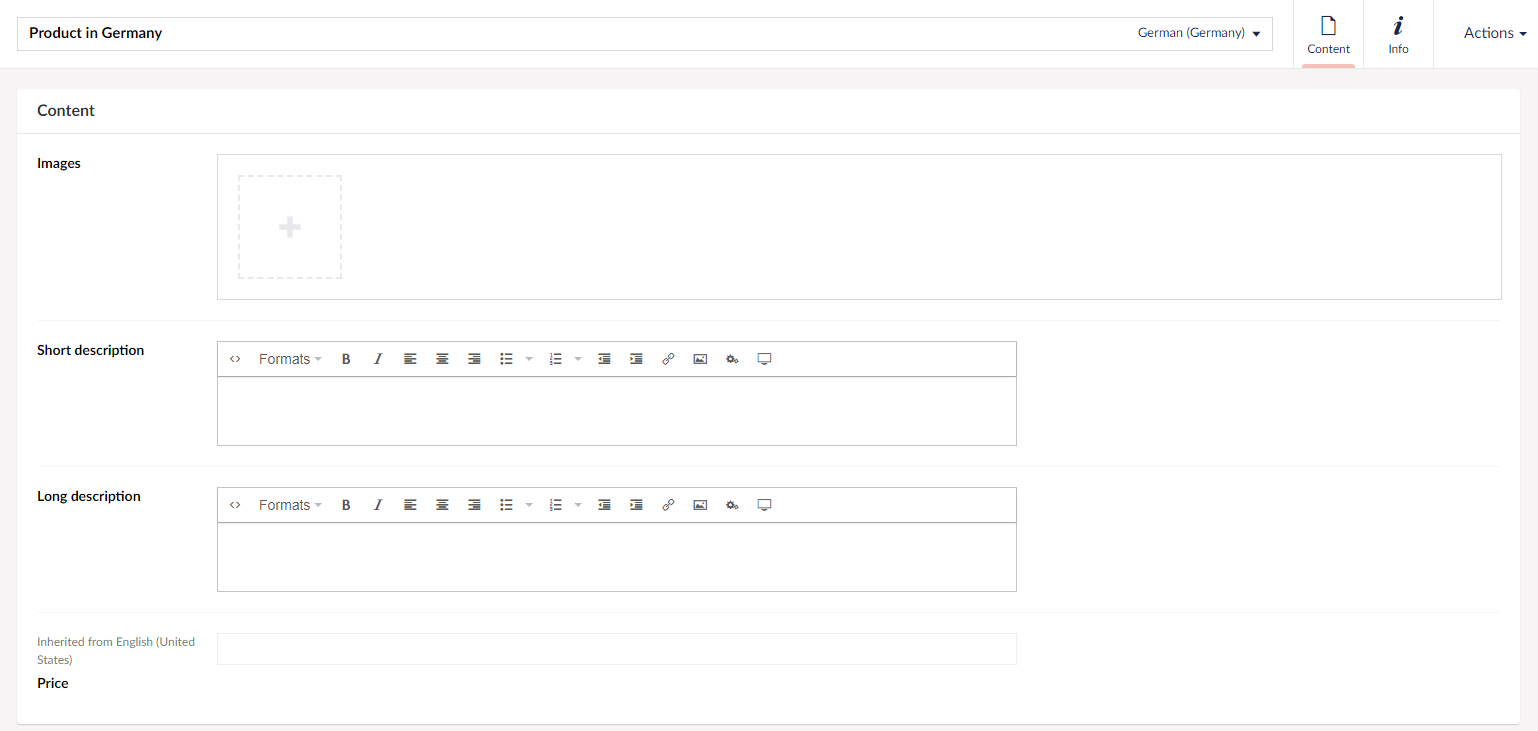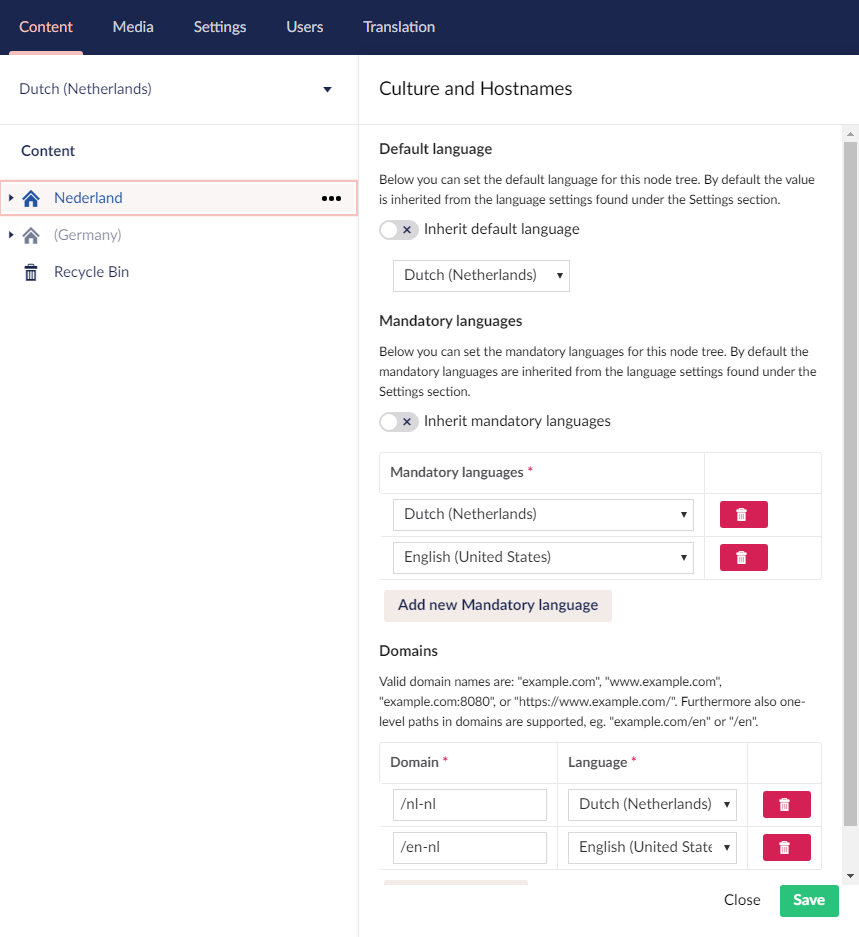New issue
Have a question about this project? Sign up for a free GitHub account to open an issue and contact its maintainers and the community.
By clicking “Sign up for GitHub”, you agree to our terms of service and privacy statement. We’ll occasionally send you account related emails.
Already on GitHub? Sign in to your account
Language configurations on content node #7037
Comments
|
Like in the v7 and older days, it is of course still possible to have multiple root nodes where you can make a completely different site for the Belgian and English website. As far as I know, this is how the features you're describing were anticipated to be used and I am not sure if we can change this behavior at this point. I'll ask around at HQ though! |
Yes, creating completely separate websites works just fine, however for v7 we previously used Vorto (I know it wasn't part of Core), which allowed to set global properties on the node and only set the language variants on the properties that would allow varying by culture.
I would say if it's not possible to change the behavior of the languages, it would be very disappointing because that means Umbraco (8) isn't suitable for multi-region websites with different languages. I really think this should be possible with Umbraco 8 and it's language variants, as it was (although through Vorto) also possible with Umbraco 7.
Thanks! Looking forward to the reply! |
|
Hi @nul800sebastiaan, did you manage to ask this around yet at HQ by any chance? |
|
Hi, I really like this idea... working with a client were we just started a new U8 project where we really could benefit from this.. having a lot of sites on one install with very different language requirements.. and we also have an ongoing project with 60+ markets where several of the markest are multi language.. this is currently on U7, but the talks of migfrating to U8 has started.. and also here it would come in REALLY handy.. ;) |
Hi @nul800sebastiaan, it's been 2 months since. Do you have any update on this for us, would be much appreciated! |
|
Not much yet... sorry #4915 (comment) |
|
While we are going to be working on #4915 in the next few weeks, I just re-read this issue and I am not sure I understand it. Without thinking about the UX, can you explain once again what it is you're trying to do? Maybe I understood it correctly:
Is that the scope of this request? Additionally, what do you expect to happen if the "Contact" node is globally set to "hide in navigation" but you suddenly decide: in Dutch and French it should not be hidden, but in German it should still be hidden. |
|
Ah, I think I misunderstood #4915 as well, not sure the things were going to be working on are covering that issue, we'll have a chat about it and this one again soon. |
Sounds like good news! Please have a look below where I try to explain the situation in detail. If I need to explain something a bit further, please let me know and I will try to do so. Assumptions:
For example, the following site structure may be applicable:
Then I have a few requirements for these properties:
Personally I see that as a nice-to-have. In case you run in to a similar scenario I think the property should be varying by culture. But if it's possible to override without a confusing interface, it would be a welcome feature! |
|
Hiya @jveer, Just wanted to let you know that we noticed that this issue got a bit stale and might not be relevant any more. We will close this issue for now but we're happy to open it up again if you think it's still relevant (for example: it's a feature request that's not yet implemented, or it's a bug that's not yet been fixed). To open it this issue up again, you can write For example:
This will reopen the issue in the next few hours. Thanks, from your friendly Umbraco GitHub bot 🤖 🙂 |
Currently we are working on a website which will be published in multiple countries and each of these countries have their own languages. The issue however is that there is no language which is used in all countries (not even English!).
One of the countries that won't have an English version is the Belgian website, it will only be published in Dutch, French and possibly German.
This wouldn't be a problem normally, however some properties are shared across all languages for a particular country. For example I want to set a price which is country-specific and I also don't want to set the hide from navigation on each language individually. (these are not the only properties).
Now the issue is, this is currently not possible in Umbraco 8 without publishing the default language and set the properties for that variant:

It would be nice to be able to set the default language (and mandatory languages) in the same way as the domains are configured. Although I'm not a (UX) designer I've tried to create a simple design which adds these options to the Cultures and Hostnames window:

We at our office are willing to help creating this feature, however we would like someone a bit more experienced in the Umbraco Core to assist on this feature and guide in the right directions, so feel free to help 😄.
The text was updated successfully, but these errors were encountered: